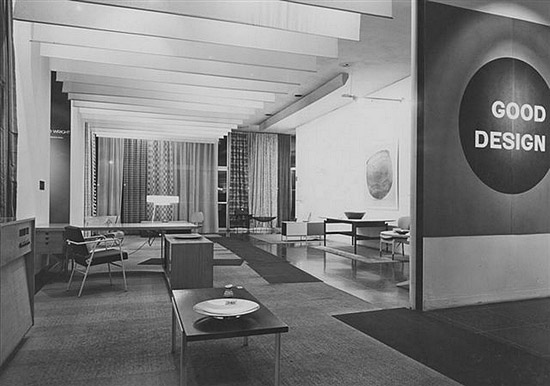See Barnett Newman, “Open Letter to William A.M. Burden, President of the Museum of Modern Art” (1953) and “Remarks at the Fourth Annual Woodstock Arts Conference” (1952), in Selected Writings and Interviews, ed. John O’Neill (Berkeley and Los Angeles: University of California Press, 1992), 38, 245.
Barnett Newman, “The Ideographic Picture” (1947), in Newman, 108.
Clement Greenberg, “Modernist Painting” (1960) and “Recentness of Sculpture” (1967), in The Collected Essays and Criticism, vol.4, Modernism with a Vengeance, 1957-1969, ed. John O’Brian (Chicago and London: University of Chicago Press, 1993), 85–93, 250–256. In “Modernist Painting,” Greenberg was still confident that the limits of painting “can be pushed back indefinitely before a picture stops being a picture and turns into an arbitrary object” (90), but “Recentness of Sculpture” is marked by concern that just this was by then happening. See also Thierry De Duve, Kant After Duchamp (Cambridge, MA, and London: MIT Press, 1996), 199–279.
Paul Chan, “What Art Is and Where It Belongs,”e-flux journal, no. 10 (November 2009), →. The text was written for The Return of Religion and Other Myths: A Critical Reader in Contemporary Art, eds. Maria Hlavajova, Sven Lütticken, and Jill Winder (Utrecht: BAK, basis voor actuele kunst; Rotterdam: post editions, 2009), 56–70.
W. J. T. Mitchell, What Do Pictures Want? The Lives and Loves of Images (Chicago and London: University of Chicago Press, 2005), 112.
This text continues a line of inquiry from the third chapter (“Attending to Things”) of my book Idols of the Market: Modern Iconoclasm and the Fundamentalist Spectacle (Berlin and New York: Sternberg, 2009).
Bruno Latour, We Have Never Been Modern, trans. Catherine Porter (Cambridge, MA: Harvard University Press, 1993), 54.
Latour, We Have Never Been Modern, 51–55.
Latour, We Have Never Been Modern, 112.
Obviously, this summary does not do justice to the specific characteristic of, and differences between, these artists’ critiques of Duchamp. For Buren, see for instance the essay “Standpoints” (1971), in Five Texts (New York: John Weber Gallery; London: Jack Wendler Gallery, 1973); and for Graham the later “My Works for Magazine Pages: ‘A History of Conceptual Art’” (1985), in Two-Way Mirror Power: Selected Writings by Dan Graham on His Art, ed. Alexander Alberro (Cambridge, MA: MIT Press, 1999); for Smithson see following note.
“Robert Smithson on Duchamp. Interview with Moira Roth” (1973), in Robert Smithson: The Collected Writings, ed. Jack Flam (Berkeley, Los Angeles, and London: University of California Press, 1996), 310.
See Hegel on “the dissolution of romantic art” (by which he refers to Christian, post-Antique art): G. W. F. Hegel, Werke, vol. 14, Vorlesungen über die Ästhetik II, ed. Eva Moldenhauer and Karl Markus Michel (Frankfurt am Main: Suhrkamp, 1970), 239.
“Que le surréalisme, dans le cadre du matérialisme dialectique, soit la seule méthode qui rende comte des rapports réels du monde et de la pensée, je le crois plus que jamais, moi ai vu la dialectique matérialiste entasser des pierres, et parce que j’ ai vu les hommes transformer la monde avec la dialectique matérialiste.” Louis Aragon, “Le Surréalisme et le devenir révolutionnaire,” Le Surréalisme au service de la révolution, no.3 (December 1931): 4.
Aragon, 4. On this period of Surrealism and the privileged role it accorded to objects, see also Steven Harris, Surrealist Art and Thought in the 1930s: Art, Politics, and the Psyche (Cambridge: Cambridge University Press, 2004).
“Georg Wilhelm Friedrich Hegel (1770–1831),” Le Surréalisme au service de la révolution, no.3 (December 1931): 1.
David Joselit, Feedback: Television Against Democracy (Cambridge, MA and London: MIT Press, 2007), 51.
See Craig Adcock, Marcel Duchamp’s Notes from the “Large Glass”: An N-Dimensional Analysis (Ann Arbor: UMI Research Press, 1983), 159; and Herbert Modlerings, “Objects of Modern Skepticism,” in The Definitely Unfinished Marcel Duchamp, ed. Thierry De Duve (Cambridge, MA: MIT Press, 1991), 255–257.
See André Breton, “Le Message automatique,” Minotaure 1 (1993), no. 3–4, 55.
André Breton, “A Letter to Seers” (1925), in Manifestoes of Surrealism, trans. Richard Seaver and Helen R. Lane (Ann Arbor: University of Michigan Press, 1972), 199. See also André Breton, “Le Message automatique,” in Minotaure, no. 3/4 (December 1933): 55.
See part 3 of Rhonda Roland Shearer, “Marcel Duchamp: A Readymade Case for Collecting Objects of Our Cultural Heritage along with Works of Art,” toutfait 1, no. 3 (2000; 2005), →.
Jean Baudrillard, Pour une critique de l’économie politique du signe (Paris: Gallimard, 1972).
Baudrillard already notes the strong connection between Bauhaus design and Surrealist objects, considering them two sides of the same coin (240–241).
Joselit, 51.
“Indem an den Dingen ihr Gebrauchswert abstirbt, werden die entfremdeten ausgehölt und ziehen als Chiffern Bedeutungen herbei. Ihrer bemächtigt sich Subjektivität, indem sie Intentionen on Wunsch und Angst in sie einlegt. Daduch das die abgeschiedenen Dinge als Bilder der subjektiven Intention einstehen, präsentieren diese sich als unvergangene und ewige. Dialektische Bilder sind Konstellationen zwischen entfremdeten Dingen und eingehender Bedeutung […]).” Theodor W. Adorno, supplement to a letter to Walter Benjamin, August 5, 1935, in Adorno/Benjamin Briefwechsel 1928-1940, ed. Henri Lonitz (Frankfurt am Main: Suhrkamp, 1994), 151–152.
→ Continued in “Art and Thingness, Part Two: Thingification” in issue 15.
